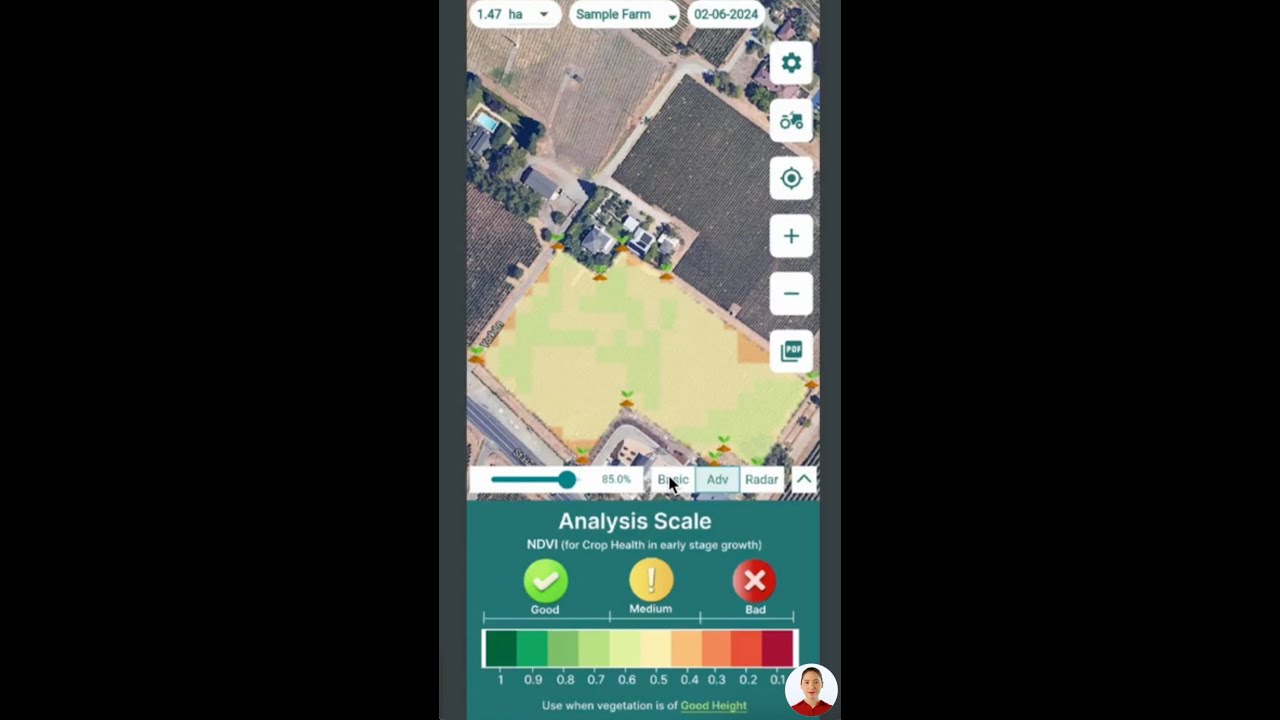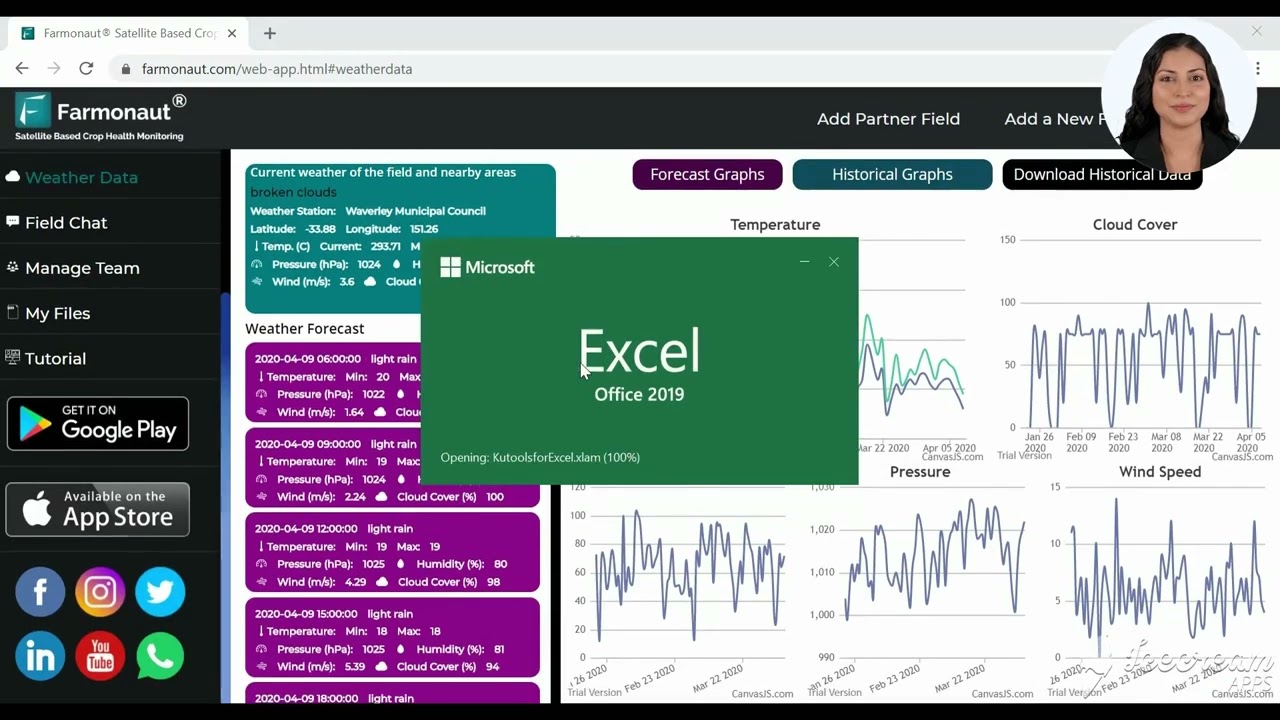Mastering Winter Farming: How Extreme Cold Impacts Crop Health and Soil Fertility in the Midwest
“Extreme cold can cause frost depth to exceed 3 feet, significantly impacting spring planting schedules in the Midwest.”
As we delve into the challenging world of winter farming in the Midwest, we must first acknowledge the significant impact that extreme cold weather has on agricultural practices. In this comprehensive guide, we’ll explore how arctic air masses affect crop health, soil fertility, and field management strategies across the United States and Canada. We’ll uncover both the challenges and unexpected benefits that arise from these harsh conditions, providing valuable insights for farmers and agricultural professionals alike.
The Arctic Assault: Understanding Extreme Cold in the Midwest
The Upper Midwest, particularly states like Minnesota, often experiences some of the coldest temperatures in the continental United States. These extreme cold events, characterized by arctic air masses sweeping down from the north, can have profound implications for agriculture. Let’s explore the various aspects of farming that are affected by these frigid conditions.
Winter Wheat Vulnerability
One of the crops most susceptible to extreme cold is winter wheat. This hardy grain, typically planted in the fall, must survive the harsh winter months to produce a harvest the following summer. However, when temperatures plummet, winter wheat faces significant challenges:
- Frost heaving: Alternating freeze-thaw cycles can push plants out of the soil, exposing roots to deadly cold.
- Winter kill: Prolonged exposure to temperatures below -15°F (-26°C) without adequate snow cover can lead to extensive plant death.
- Delayed spring growth: Extremely cold winters can slow the resumption of growth in spring, potentially reducing yields.
Crop protection during harsh winters becomes crucial for winter wheat survival. Farmers often employ strategies such as planting at the optimal depth, selecting cold-hardy varieties, and ensuring proper nutrient levels to enhance plant resilience.
Soil Fertility and Nutrient Dynamics
Extreme cold temperatures have a significant impact on soil fertility and nutrient availability. While some effects can be detrimental, others may provide unexpected benefits:
- Nitrogen preservation in frozen soil: Cold temperatures slow microbial activity, reducing nitrogen losses through leaching and denitrification.
- Phosphorus availability: Freezing and thawing cycles can increase the solubility of certain phosphorus compounds, potentially improving availability to plants in spring.
- Organic matter decomposition: Extreme cold slows the breakdown of organic matter, which can help maintain soil structure but may delay nutrient release.
Understanding these dynamics is crucial for developing effective soil health benefits of deep frost management strategies.
Frost Depth and Its Agricultural Implications
The depth to which soil freezes, known as frost depth, has far-reaching implications for agriculture:
- Spring planting after severe winter: Deep frost can delay soil warming and drying, potentially pushing back planting dates.
- Soil structure: Freeze-thaw cycles can improve soil structure by creating cracks and fissures, enhancing water infiltration and root penetration.
- Pest control: Deep frost can help control some soil-borne pests and diseases by freezing overwintering stages.
Monitoring frost depth is essential for adapting farming strategies for cold climates and making informed decisions about spring operations.

Livestock Management in Extreme Temperatures
Livestock management in extreme temperatures presents unique challenges for farmers in the Midwest. Cold stress can significantly impact animal health, productivity, and welfare. Here are some key considerations:
- Increased energy requirements: Animals need more feed to maintain body temperature in cold conditions.
- Water availability: Ensuring access to unfrozen water is crucial for livestock health.
- Shelter: Providing adequate protection from wind and precipitation becomes even more critical during extreme cold events.
- Monitoring: Regular checks on animal condition and behavior are essential to detect and address cold-related issues promptly.
Farmers must adapt their management practices to ensure the well-being of their livestock during harsh winter conditions.
Adapting Field Management Strategies
Successfully navigating the challenges of extreme cold requires farmers to adapt their field management strategies. Here are some key approaches:
Winter Cover Crops
Implementing winter cover crops can provide multiple benefits in cold climates:
- Soil protection: Cover crops help prevent erosion and maintain soil structure during freeze-thaw cycles.
- Nutrient retention: They capture and hold nutrients that might otherwise be lost to leaching.
- Organic matter addition: Cover crops contribute to soil organic matter, improving overall soil health.
Tillage Practices
Adjusting tillage practices can help manage the effects of extreme cold:
- Reduced tillage: Minimizing soil disturbance can help preserve soil structure and organic matter.
- Residue management: Leaving crop residues on the surface can insulate soil and reduce frost penetration.
- Spring tillage timing: Delaying spring tillage until soils have adequately thawed and dried can prevent compaction issues.
“Winter wheat survival rates can drop by up to 50% when temperatures plummet below -15°F (-26°C) without snow cover.”
Nutrient Management
Optimizing nutrient management in cold climates involves:
- Timing applications: Adjusting fertilizer application timing to account for slower nutrient cycling in cold soils.
- Split applications: Considering split applications to match nutrient availability with crop needs.
- Soil testing: Regular soil testing to monitor nutrient levels and adjust management practices accordingly.
Leveraging Technology for Winter Farming Success
In the face of extreme cold challenges, modern farmers are turning to advanced technologies to optimize their operations. Farmonaut, a leading agricultural technology company, offers innovative solutions to help farmers navigate the complexities of winter farming.
Satellite-Based Crop Monitoring
Farmonaut’s satellite-based crop monitoring system provides valuable insights for winter farming:
- Real-time vegetation health (NDVI) tracking
- Soil moisture level monitoring
- Early detection of winter stress on crops
These tools enable farmers to make data-driven decisions about crop management, even during the challenging winter months.
AI-Powered Advisory Systems
Farmonaut’s Jeevn AI Advisory System offers personalized recommendations for winter farming:
- Custom crop management strategies based on local weather conditions
- Predictive analytics for frost risk and cold damage
- Optimization of resource allocation during extreme cold events
By leveraging artificial intelligence, farmers can stay one step ahead of winter challenges.
Weather Data and Analysis
Accurate weather information is crucial for winter farming success. Farmonaut provides:
- High-resolution weather forecasts
- Historical weather data analysis
- Customized alerts for extreme cold events
These tools help farmers prepare for and respond to changing weather conditions effectively.
Explore Farmonaut’s API for advanced weather data integration
The Science Behind Coping with Severe Winter Effects
Understanding the scientific principles behind winter’s impact on agriculture is essential for developing effective coping strategies. Let’s delve into some key areas:
Plant Physiology in Cold Conditions
Plants have evolved various mechanisms to survive cold temperatures:
- Cold acclimation: The process by which plants increase their freezing tolerance in response to low temperatures.
- Antifreeze proteins: Some plants produce proteins that prevent ice crystal formation within cells.
- Dormancy: Many perennial plants enter a state of reduced metabolic activity to conserve energy during winter.
Understanding these adaptations helps farmers select appropriate crop varieties and manage them effectively during winter.
Soil Microbiology in Freezing Temperatures
The activity of soil microorganisms is significantly affected by cold:
- Reduced decomposition rates: Cold temperatures slow the breakdown of organic matter.
- Shifts in microbial communities: Some cold-adapted microbes become more active, while others become dormant.
- Nutrient cycling changes: The slowdown in microbial activity affects the release and transformation of nutrients in the soil.
These changes have important implications for soil fertility and nutrient management in cold climates.
Frost Heaving Mechanics
Frost heaving is a significant concern in cold regions:
- Ice lens formation: As water in soil freezes, it forms layers of ice that can lift soil and plants.
- Capillary action: Water moves toward the freezing front, exacerbating ice lens growth.
- Soil texture influence: Fine-textured soils are more susceptible to frost heaving than coarse-textured soils.
Understanding these processes helps farmers implement strategies to minimize frost heaving damage to crops.

Unexpected Benefits of Extreme Cold in Agriculture
While extreme cold presents numerous challenges, it also offers some surprising advantages for agriculture:
Pest and Disease Control
Cold temperatures can help manage certain agricultural pests and diseases:
- Insect population reduction: Many pest insects cannot survive prolonged exposure to extreme cold.
- Disease-causing organism suppression: Some pathogens are killed or weakened by freezing temperatures.
- Weed seed mortality: Extreme cold can reduce the viability of weed seeds in the soil.
Soil Structure Improvement
Freeze-thaw cycles can have beneficial effects on soil structure:
- Aggregate formation: Freezing and thawing help create soil aggregates, improving soil structure.
- Compaction alleviation: Frost action can help break up compacted soil layers.
- Increased porosity: The formation of ice crystals in soil can create channels that improve water infiltration and root growth.
Snow as Insulation
While excessive snow can cause problems, a moderate snowpack offers benefits:
- Soil temperature moderation: Snow acts as an insulator, protecting soil and plant roots from extreme cold.
- Moisture retention: Snowmelt provides a slow release of moisture to the soil in spring.
- Nitrogen deposition: Snow can capture and deposit atmospheric nitrogen, providing a natural fertilizer effect.
Adapting Farming Strategies for Cold Climates
Successfully farming in cold climates requires a combination of traditional wisdom and modern techniques. Here are some strategies farmers can employ:
Crop Selection and Breeding
- Choose cold-hardy varieties: Select crop varieties specifically bred for cold tolerance.
- Diversify crop rotations: Include a mix of winter-hardy and spring-planted crops to spread risk.
- Explore new crop options: Consider alternative crops that may be well-suited to cold climates.
Soil Management Practices
- Implement conservation tillage: Reduce soil disturbance to preserve organic matter and soil structure.
- Use cover crops: Plant winter cover crops to protect soil and improve fertility.
- Optimize drainage: Ensure proper field drainage to prevent waterlogging and reduce frost heaving.
Technology Integration
- Utilize precision agriculture tools: Implement GPS-guided equipment for accurate planting and input application.
- Monitor field conditions: Use soil sensors and weather stations to track soil temperature and moisture.
- Leverage data analytics: Employ farm management software to analyze historical data and optimize decision-making.
Farmonaut’s suite of tools can significantly enhance these strategies, providing farmers with valuable insights and data-driven recommendations.
Explore Farmonaut’s API Developer Docs for advanced integration options
The Future of Winter Farming: Sustainability and Resilience
As we look to the future of winter farming in cold climates, several key themes emerge:
Climate Change Adaptation
While extreme cold events may become less frequent in some areas due to climate change, variable weather patterns could increase. Farmers will need to:
- Stay informed about long-term climate trends
- Develop flexible farming systems that can adapt to changing conditions
- Invest in infrastructure to mitigate climate-related risks
Technological Innovation
Continued advancements in agricultural technology will play a crucial role:
- Improved crop genetics for enhanced cold tolerance
- Advanced sensing and monitoring systems for real-time field management
- AI-driven decision support tools for optimizing farm operations
Sustainable Intensification
Meeting growing food demand while preserving natural resources will require:
- Optimizing resource use efficiency through precision agriculture
- Implementing regenerative farming practices to improve soil health
- Developing integrated crop-livestock systems for closed-loop nutrient cycling
By embracing these principles and leveraging tools like those offered by Farmonaut, farmers can build resilient and sustainable agricultural systems capable of thriving in cold climates.
Conclusion: Embracing the Challenges of Winter Farming
Mastering winter farming in the face of extreme cold is no small feat. It requires a deep understanding of the complex interplay between climate, soil, and crop physiology. By leveraging scientific knowledge, adopting innovative technologies, and implementing adaptive management strategies, farmers can not only survive but thrive in cold climates.
The challenges posed by extreme cold – from protecting winter wheat to managing soil fertility and caring for livestock – are significant. However, they also present opportunities for innovation and improvement in agricultural practices. By embracing these challenges, farmers can develop more resilient and sustainable farming systems that are better equipped to face the uncertainties of a changing climate.
As we’ve explored throughout this article, tools and technologies like those offered by Farmonaut play a crucial role in this adaptation process. By providing real-time data, predictive analytics, and AI-driven insights, these solutions empower farmers to make informed decisions and optimize their operations in the face of extreme weather events.
The future of winter farming in cold climates is one of continuous learning and adaptation. By staying informed about the latest research, embracing technological innovations, and fostering a spirit of resilience, farmers can continue to produce abundant, high-quality crops even in the harshest of winter conditions. As we move forward, the agricultural community’s ability to adapt to and thrive in extreme cold will be a testament to human ingenuity and our enduring connection to the land.
Impact of Extreme Cold on Farming Factors
| Farming Factor | Impact of Extreme Cold | Management Strategy |
|---|---|---|
| Winter Wheat | Increased vulnerability to frost heaving and winter kill | Select cold-hardy varieties, plant at optimal depth, ensure proper nutrient levels |
| Soil Fertility | Slowed microbial activity, reduced nutrient cycling | Adjust fertilizer timing, consider split applications, regular soil testing |
| Nitrogen Preservation | Reduced nitrogen losses through leaching and denitrification | Optimize spring nitrogen applications based on soil tests |
| Pest Population | Potential reduction in overwintering pests | Monitor pest populations in spring, adjust pest management strategies accordingly |
| Frost Depth | Delayed soil warming and drying in spring | Monitor frost depth, adjust spring planting schedules as needed |
| Soil Compaction | Potential alleviation through freeze-thaw cycles | Delay spring tillage until soils have adequately thawed and dried |
| Livestock Care | Increased energy requirements, risk of cold stress | Provide adequate shelter, increase feed rations, ensure access to unfrozen water |
| Spring Planting | Potential delays due to prolonged soil freezing | Prepare equipment early, consider alternative planting methods or crop choices |
Frequently Asked Questions
Q: How does extreme cold affect soil fertility?
A: Extreme cold slows microbial activity in the soil, which can reduce nutrient cycling. However, it can also help preserve nitrogen by reducing losses through leaching and denitrification. The freeze-thaw cycles can also increase the availability of certain nutrients, like phosphorus.
Q: What strategies can farmers use to protect winter wheat from extreme cold?
A: Farmers can protect winter wheat by selecting cold-hardy varieties, planting at the optimal depth, ensuring proper nutrient levels before winter, and maintaining crop residue on the surface to insulate the soil. In some cases, planting into standing stubble can also provide protection.
Q: How does frost depth impact spring planting?
A: Deep frost can delay soil warming and drying in spring, potentially pushing back planting dates. Farmers need to monitor frost depth and adjust their spring planting schedules accordingly. In some cases, alternative planting methods or crop choices may be necessary.
Q: What are some unexpected benefits of extreme cold in agriculture?
A: Extreme cold can help control certain pests and diseases by reducing insect populations and suppressing some pathogens. It can also improve soil structure through freeze-thaw cycles and provide natural nitrogen deposition through snow.
Q: How can farmers adapt their management practices for cold climates?
A: Farmers can adapt by selecting cold-hardy crop varieties, implementing conservation tillage practices, using cover crops, optimizing drainage, and leveraging technology for precision agriculture and field monitoring. Tools like Farmonaut’s satellite-based crop monitoring and AI advisory systems can provide valuable insights for decision-making.




















